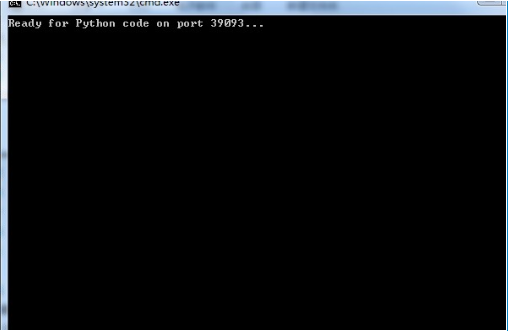python如何使用代碼運行助手
python代碼運行助手是能在網頁上運行python語言的工具。因為python的運行環境在很多教程里都是用dos的,黑乎乎的界面看的有點簡陋,所以出了這python代碼運行助手,作為ide。
實際上,python代碼運行助手界面只能算及格分,如果要找ide,推薦使用jupyter。jupyter被集成到ANACONDA里,只要安裝了anacoda就能使用了。
1、要打開這運行助手首先要下載一個learning.py,如果找不到可以復制如下代碼另存為“learning.py”,編輯器用sublime、或者notepad++。
#!/usr/bin/env python3# -*- coding: utf-8 -*- r’’’learning.py A Python 3 tutorial from http://www.liaoxuefeng.com Usage: python3 learning.py’’’ import sys def check_version(): v = sys.version_info if v.major == 3 and v.minor >= 4:return True print(’Your current python is %d.%d. Please use Python 3.4.’ % (v.major, v.minor)) return False if not check_version(): exit(1) import os, io, json, subprocess, tempfilefrom urllib import parsefrom wsgiref.simple_server import make_server EXEC = sys.executablePORT = 39093HOST = ’local.liaoxuefeng.com:%d’ % PORTTEMP = tempfile.mkdtemp(suffix=’_py’, prefix=’learn_python_’)INDEX = 0 def main(): httpd = make_server(’127.0.0.1’, PORT, application) print(’Ready for Python code on port %d...’ % PORT) httpd.serve_forever() def get_name(): global INDEX INDEX = INDEX + 1 return ’test_%d’ % INDEX def write_py(name, code): fpath = os.path.join(TEMP, ’%s.py’ % name) with open(fpath, ’w’, encoding=’utf-8’) as f:f.write(code) print(’Code wrote to: %s’ % fpath) return fpath def decode(s): try:return s.decode(’utf-8’) except UnicodeDecodeError:return s.decode(’gbk’) def application(environ, start_response): host = environ.get(’HTTP_HOST’) method = environ.get(’REQUEST_METHOD’) path = environ.get(’PATH_INFO’) if method == ’GET’ and path == ’/’:start_response(’200 OK’, [(’Content-Type’, ’text/html’)])return [b’<html><head><title>Learning Python</title></head><body><form method='post' action='/run'><textarea name='code' style='width:90%;height: 600px'></textarea><p><button type='submit'>Run</button></p></form></body></html>’] if method == ’GET’ and path == ’/env’:start_response(’200 OK’, [(’Content-Type’, ’text/html’)])L = [b’<html><head><title>ENV</title></head><body>’]for k, v in environ.items(): p = ’<p>%s = %s’ % (k, str(v)) L.append(p.encode(’utf-8’))L.append(b’</html>’)return L if host != HOST or method != ’POST’ or path != ’/run’ or not environ.get(’CONTENT_TYPE’, ’’).lower(). startswith(’application/x-www-form-urlencoded’):start_response(’400 Bad Request’, [(’Content-Type’, ’application/json’)])return [b’{'error':'bad_request'}’] s = environ[’wsgi.input’].read(int(environ[’CONTENT_LENGTH’])) qs = parse.parse_qs(s.decode(’utf-8’)) if not ’code’ in qs:start_response(’400 Bad Request’, [(’Content-Type’, ’application/json’)])return [b’{'error':'invalid_params'}’] name = qs[’name’][0] if ’name’ in qs else get_name() code = qs[’code’][0] headers = [(’Content-Type’, ’application/json’)] origin = environ.get(’HTTP_ORIGIN’, ’’) if origin.find(’.liaoxuefeng.com’) == -1:start_response(’400 Bad Request’, [(’Content-Type’, ’application/json’)])return [b’{'error':'invalid_origin'}’] headers.append((’Access-Control-Allow-Origin’, origin)) start_response(’200 OK’, headers) r = dict() try:fpath = write_py(name, code)print(’Execute: %s %s’ % (EXEC, fpath))r[’output’] = decode(subprocess.check_output([EXEC, fpath], stderr=subprocess.STDOUT, timeout=5)) except subprocess.CalledProcessError as e:r = dict(error=’Exception’, output=decode(e.output)) except subprocess.TimeoutExpired as e:r = dict(error=’Timeout’, output=’執行超時’) except subprocess.CalledProcessError as e:r = dict(error=’Error’, output=’執行錯誤’) print(’Execute done.’) return [json.dumps(r).encode(’utf-8’)] if __name__ == ’__main__’: main()
2、再用一個記事本寫如下的代碼:
@echo offpython learning.pypause
另存為‘運行.bat’
3、把“運行.bat”和“learning.py”放到同一目錄下。

4、雙擊運行“運行.bat',之后會彈出黑色的dos窗口,這個窗口不要關閉。

5、輸入網址對應的網址和端口,整個過程就完成了。

知識點擴展:
Python在線運行代碼助手
#!/usr/bin/env python3# -*- coding: utf-8 -*- r’’’learning.py A Python 3 tutorial from http://www.liaoxuefeng.com Usage: python3 learning.py’’’ import sys def check_version(): v = sys.version_info if v.major == 3 and v.minor >= 4: return True print(’Your current python is %d.%d. Please use Python 3.4.’ % (v.major,v.minor)) return False if not check_version(): exit(1) import os,io,json,subprocess,tempfilefrom urllib import parsefrom wsgiref.simple_server import make_server EXEC = sys.executablePORT = 39093HOST = ’local.liaoxuefeng.com:%d’ % PORTTEMP = tempfile.mkdtemp(suffix=’_py’,prefix=’learn_python_’)INDEX = 0 def main(): httpd = make_server(’127.0.0.1’,PORT,application) print(’Ready for Python code on port %d...’ % PORT) httpd.serve_forever() def get_name(): global INDEX INDEX = INDEX + 1 return ’test_%d’ % INDEX def write_py(name,code): fpath = os.path.join(TEMP,’%s.py’ % name) with open(fpath,’w’,encoding=’utf-8’) as f: f.write(code) print(’Code wrote to: %s’ % fpath) return fpath def decode(s): try: return s.decode(’utf-8’) except UnicodeDecodeError: return s.decode(’gbk’) def application(environ,start_response): host = environ.get(’HTTP_HOST’) method = environ.get(’REQUEST_METHOD’) path = environ.get(’PATH_INFO’) if method == ’GET’ and path == ’/’: start_response(’200 OK’,[(’Content-Type’,’text/html’)]) return [b’<html><head><title>Learning Python</title></head><body><form method='post' action='/run'><textarea name='code' style='width:90%;height: 600px'></textarea><p><button type='submit'>Run</button></p></form></body></html>’] if method == ’GET’ and path == ’/env’: start_response(’200 OK’,’text/html’)]) L = [b’<html><head><title>ENV</title></head><body>’] for k,v in environ.items(): p = ’<p>%s = %s’ % (k,str(v)) L.append(p.encode(’utf-8’)) L.append(b’</html>’) return L if host != HOST or method != ’POST’ or path != ’/run’ or not environ.get(’CONTENT_TYPE’,’’).lower().startswith(’application/x-www-form-urlencoded’): start_response(’400 Bad Request’,’application/json’)]) return [b’{'error':'bad_request'}’] s = environ[’wsgi.input’].read(int(environ[’CONTENT_LENGTH’])) qs = parse.parse_qs(s.decode(’utf-8’)) if not ’code’ in qs: start_response(’400 Bad Request’,’application/json’)]) return [b’{'error':'invalid_params'}’] name = qs[’name’][0] if ’name’ in qs else get_name() code = qs[’code’][0] headers = [(’Content-Type’,’application/json’)] origin = environ.get(’HTTP_ORIGIN’,’’) if origin.find(’.liaoxuefeng.com’) == -1: start_response(’400 Bad Request’,’application/json’)]) return [b’{'error':'invalid_origin'}’] headers.append((’Access-Control-Allow-Origin’,origin)) start_response(’200 OK’,headers) r = dict() try: fpath = write_py(name,code) print(’Execute: %s %s’ % (EXEC,fpath)) r[’output’] = decode(subprocess.check_output([EXEC,fpath],stderr=subprocess.STDOUT,timeout=5)) except subprocess.CalledProcessError as e: r = dict(error=’Exception’,output=decode(e.output)) except subprocess.TimeoutExpired as e: r = dict(error=’Timeout’,output=’執行超時’) except subprocess.CalledProcessError as e: r = dict(error=’Error’,output=’執行錯誤’) print(’Execute done.’) return [json.dumps(r).encode(’utf-8’)] if __name__ == ’__main__’: main()
到此這篇關于python如何使用代碼運行助手的文章就介紹到這了,更多相關python代碼運行助手用法內容請搜索好吧啦網以前的文章或繼續瀏覽下面的相關文章希望大家以后多多支持好吧啦網!
相關文章:

 網公網安備
網公網安備